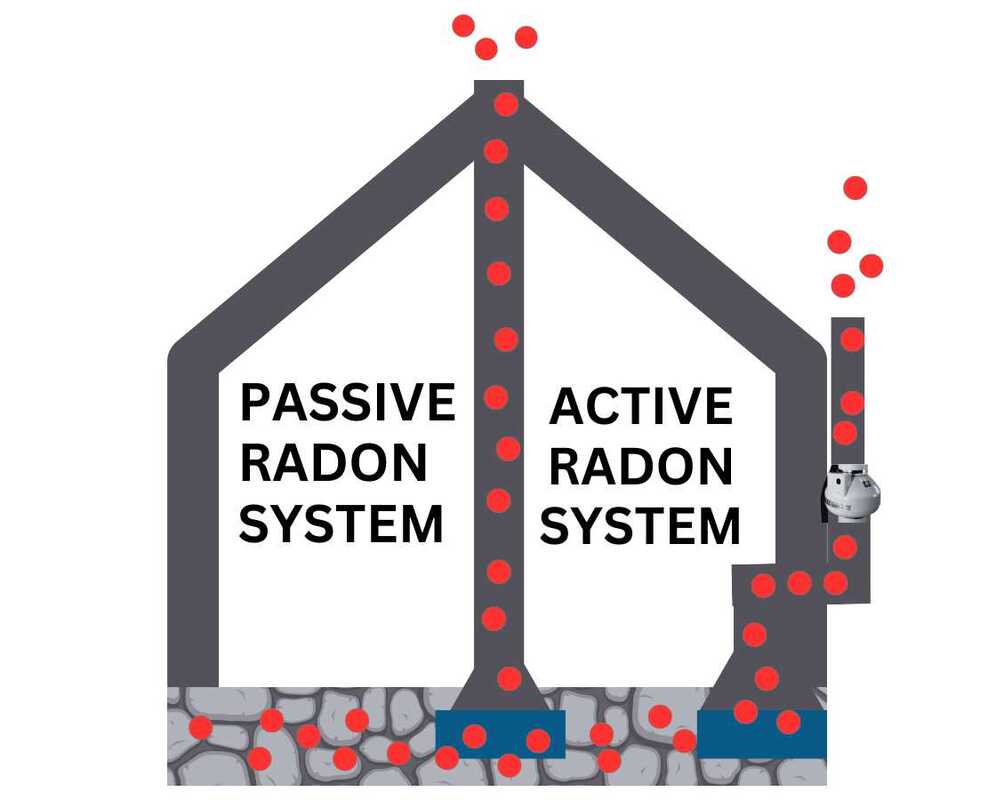Passive vs. Active Radon Systems: Exploring the Pros and Cons to Help You Pick the Right Solution4/20/2023
Radon is a radioactive gas that is colorless, odorless, and tasteless. It is formed naturally from the decay of uranium in rocks and soil. Radon can enter houses and structures through foundation, wall, and floor fissures. High radon levels can cause lung cancer, particularly in smokers. This article will compare passive and active radon mitigation systems to help homeowners choose the right solution to reduce radon levels in their homes. Passive radon mitigation systems use natural airflow to reduce radon levels in a home. On the contrary, active radon mitigation systems actively use fans and other equipment to reduce radon levels. Read on to learn more. Passive Radon Mitigation SystemsPassive radon mitigation systems rely on natural air movement to reduce radon levels in the home. These systems are typically installed during the construction of a new home or added as a retrofit to an existing home. They work by creating a pressure difference between the soil beneath the home and the interior of the home, which causes radon gas to move away from the house. Passive radon mitigation systems typically contain a vent pipe from the home's foundation to the roof. This vent pipe allows radon gas to escape beneath the home and vent into the atmosphere. A fan is not used in this system; it relies on natural air movement to carry the radon gas away from home. Pros
Cons
Active Radon Mitigation SystemsActive radon mitigation systems are more effective than passive systems, and they work by actively removing radon from home. They typically consist of a fan and ventilation pipe system that creates negative air pressure in the soil surrounding the home, which helps to draw radon gas out from beneath the home's foundation and vent it safely to the outside. Pros
Cons
Making the Right ChoiceChoosing the right radon mitigation system for your home involves considering several factors.
Importance of Professional InstallationRegardless of the type of radon mitigation system you choose, it is essential to have it installed by a qualified professional. This will ensure that the system is installed correctly and will function effectively to reduce radon levels in your home. ConclusionRadon is a serious health hazard, but there are ways to reduce its levels in the home. Passive and active radon mitigation systems have advantages and disadvantages.
Still, by considering your home's specific needs and budget, you can choose the right system to protect your family's health. Always have your system installed by a qualified professional to ensure it works effectively. Reducing radon levels in your home is essential in ensuring your family's safety and well-being. Comments are closed.
|
Archives
June 2024
Categories |
|
Serving Fort Collins, CO and Surrounding Areas
|
|





